Are you searching for the perfect guide to Dambulla, or do you prefer to know the highlights before you arrive? Whether you’re an adventurer eager to explore or someone planning a trip, this guide is for you. Nestled in the heart of Sri Lanka, Dambulla is a treasure trove of historical wonders, cultural landmarks, and natural beauty waiting to be discovered. In this comprehensive guide, you’ll uncover the main attractions and must-see places in Dambulla that will make your visit unforgettable.
At SL VOYO, our mission is to craft the best tours in Sri Lanka, providing you with an exceptional travel experience. We hope this blog will be helpful to any traveller looking to explore Sri Lanka and enjoy the experience, whether you travel with SL VOYO or independently.
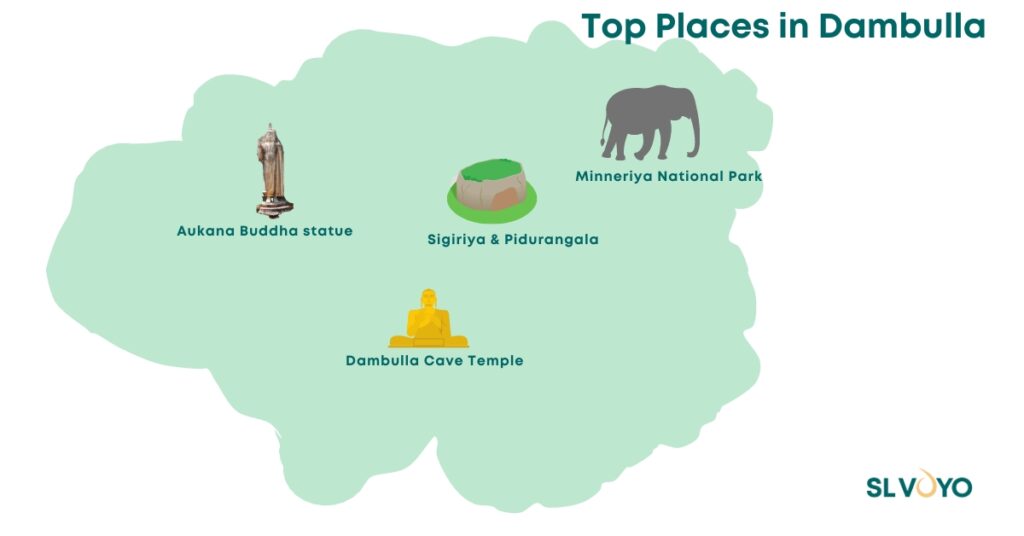
Table of Contents
Historical and Cultural Attractions
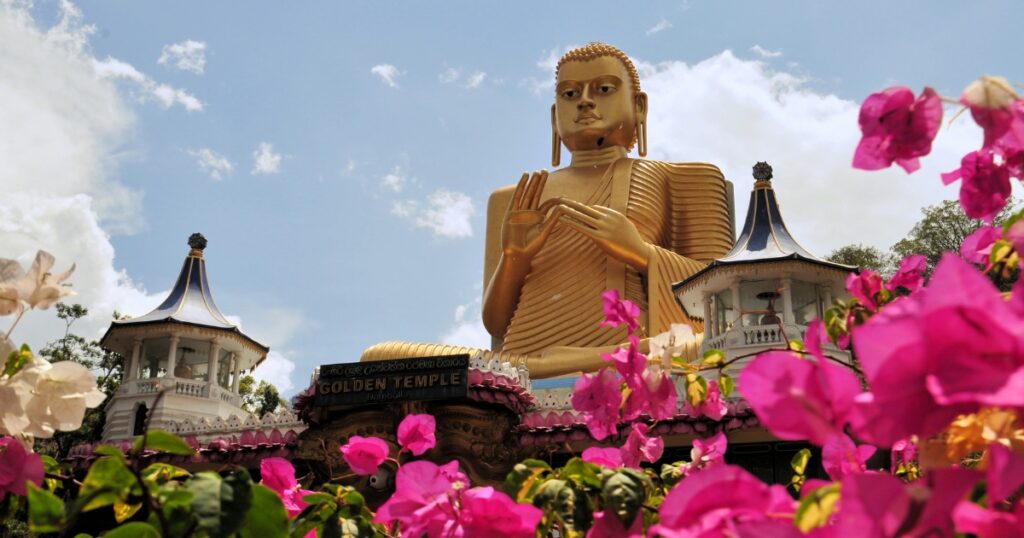
Dambulla Cave Temple
The Dambulla Cave Temple, also known as the Golden Temple of Dambulla, is a sight to behold. This UNESCO World Heritage Site has been a pilgrimage site for over 22 centuries. The complex houses five caves under a vast overhanging rock, each filled with statues of the Buddha and murals covering nearly every surface. I was especially taken by the tranquillity inside the caves, a serene escape from the tropical heat outside.
Tip: Visit early in the morning to avoid the crowds and fully absorb the peaceful atmosphere.
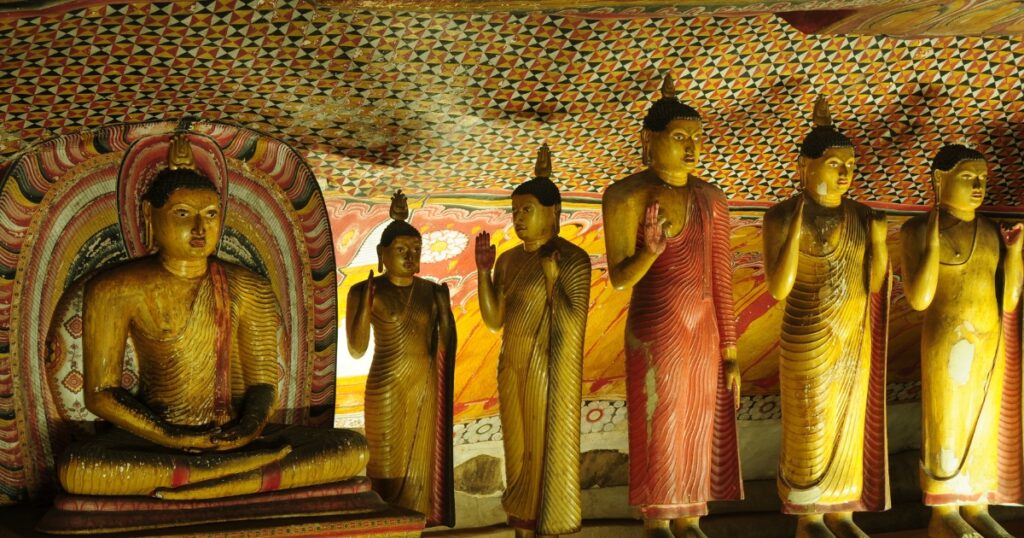
Sigiriya Rock Fortress
Just a short drive from Dambulla, Sigiriya, or Lion Rock, is an ancient rock fortress that rises dramatically from the central plains. The climb to the top might seem daunting at first, but it’s absolutely worth it for the stunning views and frescoes along the way. I still remember the thrill of stepping through the Lion’s Paws and gazing out over the forests below.
Guide: Wear comfortable shoes and carry water, as the climb can take a couple of hours, especially if you stop to enjoy the historical frescoes.
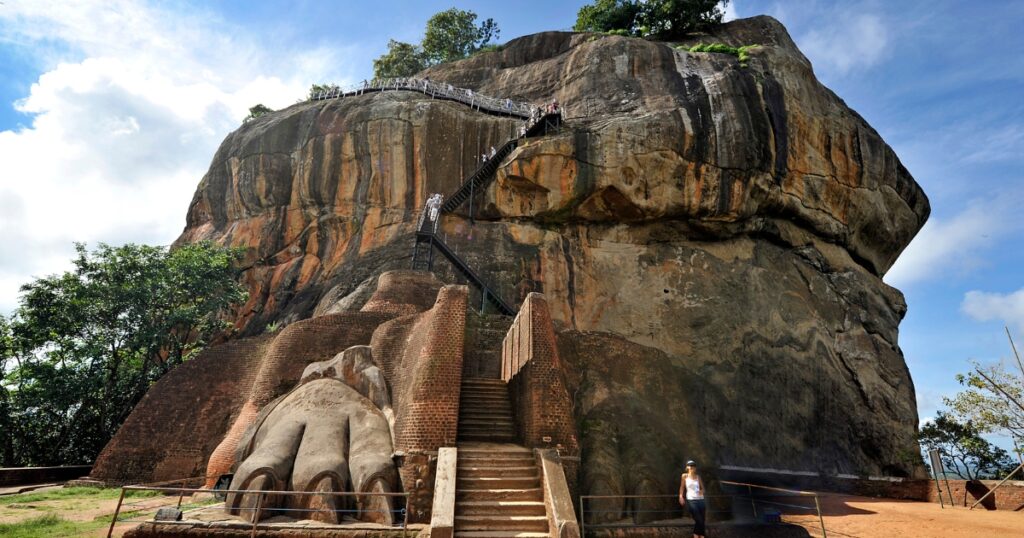
Ibbankatuwa Prehistoric Burial Site
For those interested in the deeper history of Sri Lanka, the Ibbankatuwa Prehistoric Burial Site near Dambulla offers a fascinating glimpse into the island’s prehistoric past. The site is less crowded but provides a profound sense of connection to the ancient people who once lived here. The burial site features stone tombs and ancient artifacts that tell the story of early human settlements in Sri Lanka.
Aukana Buddha Statue
The Aukana Buddha Statue, standing at 42 feet tall, is a masterpiece of ancient Sri Lankan craftsmanship. Carved from a single granite rock, this 5th-century statue is renowned for its intricate details and serene expression. Located near Kekirawa, it exemplifies the skill and devotion of ancient sculptors. This iconic monument remains a significant symbol of Sri Lanka’s rich cultural and religious heritage.
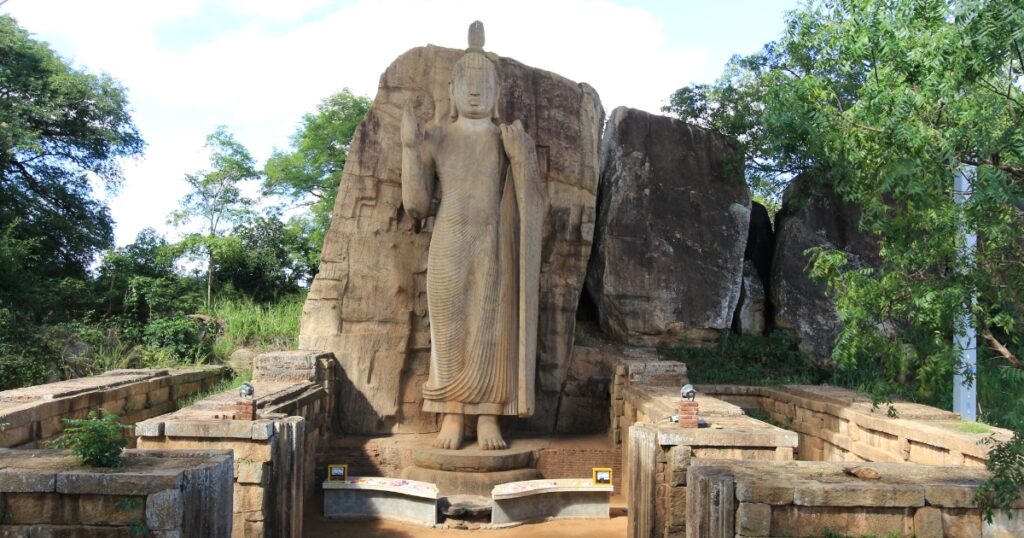
Nature and Wildlife Experiences
Minneriya National Park
If you visit during the dry season from June to September, you’ll witness the incredible sight of the Elephant Gathering at Minneriya National Park. This annual event is one of the largest wildlife spectacles in the world, where hundreds of elephants converge on the park. Observing these gentle giants in their natural habitat was a humbling and unforgettable experience.
Photography Tip: Bring a good zoom lens to capture the elephants while maintaining a respectful distance.
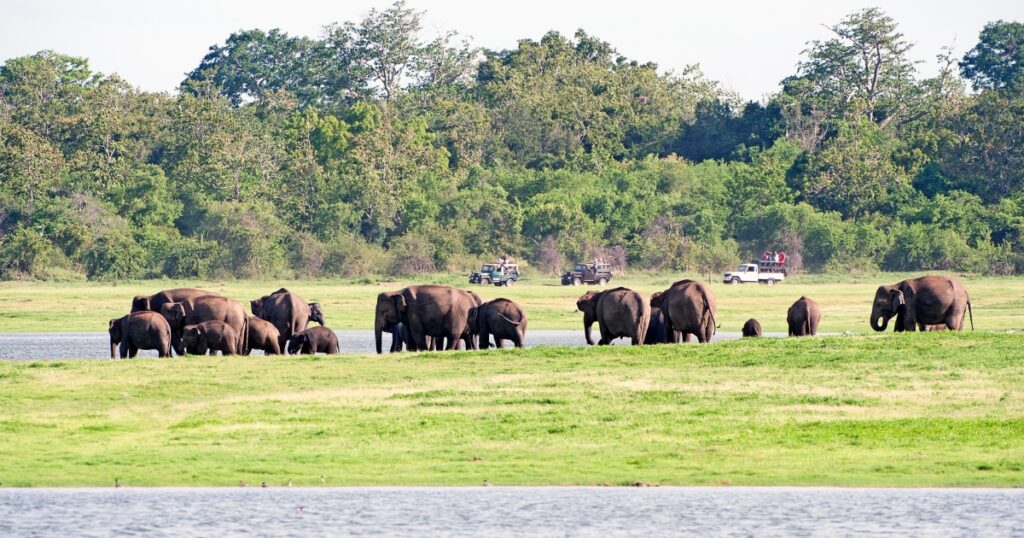
Pidurangala Rock
For a different perspective, hike up Pidurangala Rock, which provides a breathtaking view of Sigiriya Rock across the horizon. This hike is somewhat easier than Sigiriya and offers a more solitary atmosphere, perfect for sunrise or sunset views. I found this to be a perfect moment of reflection, watching the day begin with such a spectacular view.
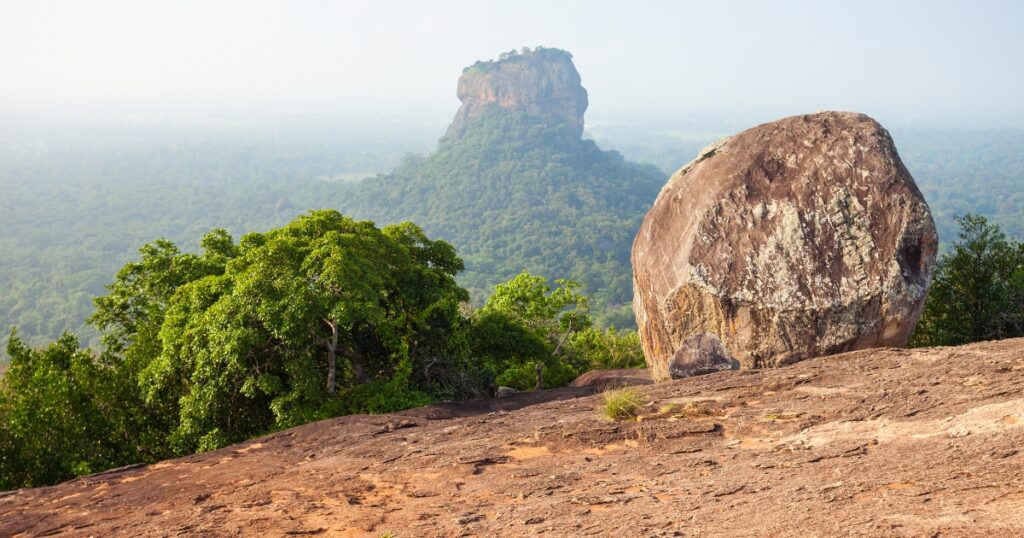
Local Experiences and Cuisine
Village Tours
One of the most rewarding experiences in Dambulla was a guided village tour. Walking through a local village, learning about daily routines, and even participating in a cooking lesson with a local family was incredibly enriching. It’s a chance to connect with the local culture and understand the Sri Lankan way of life on a deeper level. These tours often include traditional activities like farming, handicrafts, and traditional cooking, offering an immersive experience.
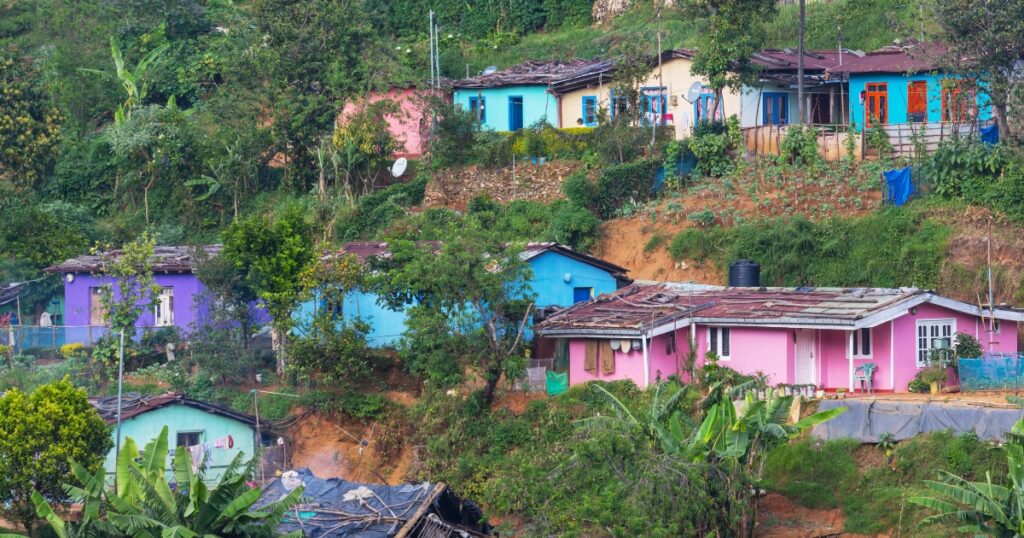
Culinary Delights
Sri Lankan cuisine is a feast for the senses, and Dambulla offers some of the most authentic culinary experiences. Don’t miss out on local dishes like fish ambul thiyal (sour fish curry) and kottu roti, especially at a bustling night market. The flavors are bold, and the use of fresh, local ingredients makes every dish memorable.
Foodie Tip: Visit a local market with a guide who can explain the ingredients and traditional cooking methods. Trying dishes like hoppers (a type of pancake) and pol sambal (a coconut relish) can offer a deeper understanding of the local palate.
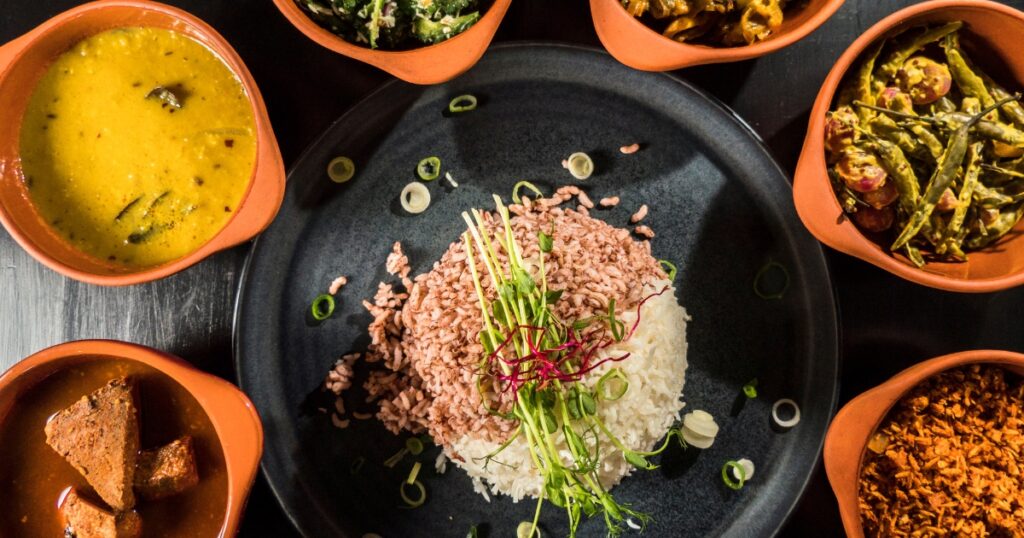
Accommodation and Travel Tips
Where to Stay
Dambulla offers a range of accommodations, from eco-friendly lodges to luxurious resorts. I stayed at a charming eco-resort which offered guided nature walks and organic Sri Lankan cuisine, enhancing my connection to the environment and local culture. Whether you prefer a serene stay amidst nature or a more luxurious experience, Dambulla has something to suit your needs.
Eco-Friendly Lodges: For those who appreciate sustainability, there are several eco-friendly lodges that offer a rustic yet comfortable stay, often with stunning views and opportunities for wildlife spotting.
Luxury Resorts: If you prefer a more upscale experience, luxury resorts in the area provide top-notch amenities, including spas, pools, and gourmet dining.
Getting Around Dambulla
Starting your journey at the iconic Dambulla Cave Temple, you’ll find that reaching Sigiriya, Minneriya National Park, and the Aukana Buddha Statue is both straightforward and rewarding. To get to Sigiriya, located approximately 17 km away, you can take a 30-minute car or taxi ride north on Kandy Road (A9), then turn right onto Sigiriya Road (B162). Buses are also available for a budget-friendly option. Minneriya National Park, about 40 km from Dambulla, is an hour’s drive northeast via Kandy Road (A9) and Habarana Road (A11). For public transport, take a bus to Habarana and then another towards Polonnaruwa, or hire a tuk-tuk for the final stretch.
The Aukana Buddha Statue, approximately 50 km southwest, is a 1 hour and 15 minutes drive from the Dambulla Cave Temple. Travel south on Kandy Road (A9) and then take Kekirawa Road (B212) to reach this historic site. Alternatively, take a bus to Kekirawa and then a local bus or tuk-tuk to the statue. Hiring a local guide or renting a car can enhance your experience, offering flexibility and deeper insights into the region’s rich history. Enjoy exploring the cultural and natural wonders that Dambulla and its surroundings have to offer!
Best Time to Visit
The best time to visit Dambulla is during the dry season, from May to September when the weather is most pleasant for outdoor activities. However, Dambulla’s attractions are accessible year-round, and each season offers its unique charm.
From ancient caves to wild elephant gatherings, Dambulla offers a unique blend of cultural and natural attractions that are sure to enrich your travel experience. Whether you’re a history buff, nature lover, or culinary enthusiast, Dambulla has something special for you.
Dress code: Remember, modesty is key when visiting religious sites like the cave temple.
Comfortable shoes: There’s going to be some climbing involved, so ditch the flip-flops and opt for shoes with good grip.
Hydration is key: Sri Lanka can get quite hot, so carry a reusable water bottle and stay hydrated throughout the day.
FAQ
What is Dambulla famous for?
Dambulla is famous for its ancient cave temple complex, known as the Dambulla Cave Temple or the Golden Temple of Dambulla. This UNESCO World Heritage Site features stunning Buddha statues and murals dating back to the first century BCE.
How many days do you need in Dambulla?
Typically, one day is sufficient to explore the main attractions in Dambulla, including the Dambulla Cave Temple and the nearby attractions like the Sigiriya Rock Fortress. However, spending two days allows for a more relaxed visit and exploration of additional sites.
How much is the entrance fee for Dambulla Royal Cave?
The entrance fee for the Dambulla Cave Temple is approximately USD 10 for foreign tourists. Prices may vary slightly, so it’s advisable to check the latest rates before visiting.
Who is the king of Dambulla?
There is no current “king” of Dambulla. Historically, King Valagamba of Anuradhapura is credited with the construction and renovation of the Dambulla Cave Temple during his reign in the 1st century BCE.
How long does it take to see Dambulla caves?
It generally takes about 2 to 3 hours to explore the Dambulla Cave Temple complex thoroughly, allowing time to appreciate the intricate murals, statues, and the overall ambiance of the caves.
How many steps is Dambulla?
To reach the Dambulla Cave Temple, visitors must climb approximately 364 steps. The climb is moderately challenging but offers rewarding views and a spiritual experience at the top.
What is the golden triangle in Sri Lanka?
The Golden Triangle in Sri Lanka refers to the cultural triangle formed by the cities of Anuradhapura, Polonnaruwa, and Kandy. This region is rich in historical, cultural, and religious sites, including ancient cities, temples, and archaeological sites.
How old is Dambulla cave?
The Dambulla Cave Temple dates back to the 1st century BCE, making it over 2,000 years old. It has been a place of worship and pilgrimage for centuries, with continuous renovations and additions.
How tall is the Dambulla rock?
The rock at Dambulla, on which the cave temple is situated, is approximately 160 meters (525 feet) tall. The climb to the temple provides panoramic views of the surrounding landscape.
How to get to Dambulla, Sri Lanka?
Dambulla is accessible by bus, train, and private vehicle. From Colombo, it takes about 4-5 hours by bus or car. Trains are also available from Colombo to Habarana, which is about 24 kilometers from Dambulla, followed by a short bus or taxi ride.
Ready to explore the wonders of Dambulla and create your own unforgettable memories? Contact SL VOYO today to book your personalized tour and experience the best of Sri Lanka with local experts. Dive deep into the heart of Sri Lankan culture and adventure—your journey of a lifetime awaits!